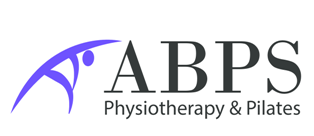The cardiovascular system consists of the heart, which acts as a pumps to propel the blood, and the blood vessels that comprises a complex network of conduit in which the blood circulates. The cardiovascular system is responsible for supplying all body tissues with oxygen and nutrients, and remove carbon dioxide and other waste products of metabolism. Unbalanced diet, lack of physical activity and unhealthy lifestyle increase the risks of developing atherosclerosis and cardiovascular disease such as coronary heart disease, heart attack, peripheral disease and stroke. We carry out various tests, please visit the “Health and Wellbeing Testing” section on this website for further information about these tests and their importance. We create programmes that generally comprise healthy nutrition, some supplements and natural remedies (bioactive compounds found in plants and some foods), lifestyle improvement and physical activity. The objective of the interventions is to reduce the cardiovascular diseases risks factors, including:
Obesity
Obesity is linked with higher risk of developing cardiovascular diseases, and thus it is important that obese people lose weight. It is also important to reduce the amount of body fat, especially around the waist as these factors increase further the risks of cardiovascular disease development. We design a programme to help you lose weight, improve your body composition, and maintain a healthy weight.
Hypercholesterolemia
Cholesterol is a type of fat, and is an essential component of the cell membrane, brain and nerve cells. Cholesterol is also important to produce vitamin D in the Skin, the bile in the liver, and various hormones, such as testosterone, oestrogen and cortisol. The majority of cholesterol is manufactured by the liver, but it is also present in food. Cholesterol cannot circulate freely in the blood, instead it is transported in molecules called lipoproteins. There are two types of cholesterol, high density lipoprotein (HDL) or “good cholesterol”, and low density lipoprotein (LDL) or “bad cholesterol”, respectively. LDL transports cholesterol from the liver to the body tissues, while HDL transport cholesterol from the body tissues to the liver. Hypercholesterolemia refers to high levels of cholesterol in the blood. High levels of LDL cholesterol and low levels of HDL cholesterol increase the risk of developing atherosclerosis, cardiovascular diseases, heart attack and stroke. A balanced diet, physical exercise, and lifestyle improvements represent important tools to combat hypercholesterolemia and lower cholesterol to healthy levels. Some individuals have the genetic predisposition to produce too much cholesterol in the liver, requiring cholesterol lowering drugs (statins). In this cases diet and lifestyle improvement, and exercise prescription can be used in conjunction with statins to correct hypercholesterolemia.
Hypertriglyceridemia
Triglycerides are a form of fat composed of glycerol and 3 fatty acids. Triglycerides are present in food, but they can also be manufactured by the liver. Triglycerides are either used by the body as a substrate to produce energy or stored as fat. After eating a meal containing fat, the levels of triglycerides in the blood increase, and usually it takes a few hours to return to normal levels. Hypertriglyceridemia occurs when the blood levels of triglycerides remains too high, which contributes to the development of atherosclerosis, heart diseases and stroke. Hyperlipidaemia refers to high levels of both cholesterol and triglycerides. Diet and lifestyle improvement, physical exercise can be used as natural treatments to reduce high levels of triglycerides, and also they can be used in conjunction with drug therapy.
Hypertension
As the blood circulates within the blood vessels, it presses against their walls, the force of this action is termed blood pressure, which is needed to push the blood around the body. Blood pressure levels vary according to the different activities, such as physical exercise or stressful situations. Usually blood pressure returns to normal levels, once the situation has passed. However, if the blood pressure remains constantly high, is called hypertension. High blood pressure makes the heart work harder to propel the blood, and also increases the stress on the arterial walls. Prolonged high blood pressure increases the risk of developing heart failure, atherosclerosis, cardiovascular diseases and stroke. It has been shown that physical exercise, a balanced diet and a healthy lifestyle can lower blood pressure to normal levels. Depending on the individual needs, these tools can be utilised independently, or in conjunction with drug therapy to combat high blood pressure.
Stress and Lifestyle Improvements
There is some evidence suggesting that high levels of stress can contribute developing cardiovascular diseases. Researchers at Harvard University observed a possible link between stress and the production of extra white blood cells, which can cause the arteries to become inflamed. It is well established that atherosclerosis begins with the inflammation of the innermost layer of the arteries walls that may lead to angina, heart attack and stroke. Besides, long-term exposure to stress can cause high blood pressure, overeating and weight gain, which often adverse effects on the cardiovascular system. Therefore, it is important to reduce stress and improve lifestyle as a part of cardiovascular health programme. Keeping diabetes under control is also important to prevent cardiovascular diseases.
Our cardiovascular health interventions that include healthy diet, exercise, stress reduction and lifestyle improvement can be implemented independently as a prevention programme. For cardiovascular diseases patients, it can be implemented in conjunction with the therapy and treatments prescribed by the clinicians.
Book an appointment now
